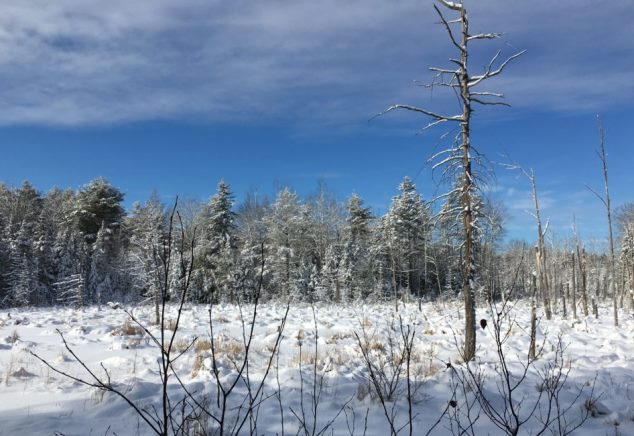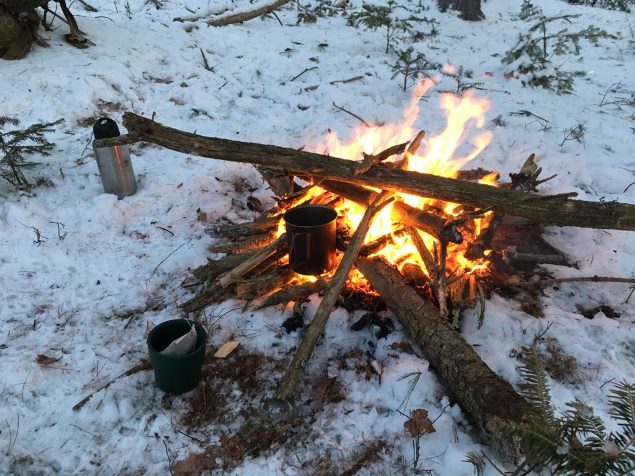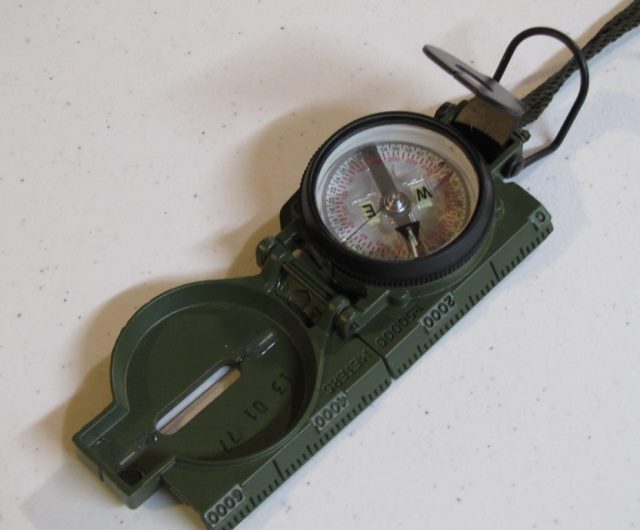Pop quiz!
by Jarhead Survivor, contributing writer
What’s the first thing you should do or look for when you’re lost in the woods and you realize you’re going to spend the night out there?

If you said food you’re not alone. Unfortunately, you’re also wrong.
For some reason, when people think about getting lost – especially if it’s going to be overnight – they want to go looking for food first. Read through the following scenario and then we’ll revisit it after looking at the Survival Rule of Threes.
Hypothetical Wilderness Survival Scenario
You’re driving through unfamiliar country in the Northeast in the fall. Maybe you’re looking for abandoned ghost trains in the North Woods. Your fancy handheld GPS takes you down a back road. You’re eager to get to your hotel and you’re tired, so you follow the GPS even though the road is making you uneasy. It’s gone from tar, to dirt, to little more than a goat path over the last five miles and suddenly you come up on a wide stream. You figure the GPS wouldn’t steer you wrong so you ease into the stream confident you’ll be able to drive through it.
Suddenly, the left side of your vehicle slips into a trough in the fast-moving water and the engine quits as it floods. The next thing you know, ice-cold water is flowing around your feet and rising fast. You slide over to the passenger side and jump out as the car sinks another foot.
Related article: Coffee Can Survival Kit for Your Vehicle
It’s now flooded up to the windows and you realize there’s no hope of getting out by yourself. You struggle back to the shore and realize your phone was in the charger and is now underwater and wouldn’t work even if you could find it. You drag yourself up onto the bank of the stream, wet from the chest down and shivering from the cold. It’s about an hour or so until sundown and there’s no way you’re going to be able to walk back to the main road. With all the twists and turns you took coming in you’re pretty sure you couldn’t find your way back anyway. What do you do?
The Survival Rule of Threes
Actually, the Survival Rule of Threes isn’t a set of “rules” per se. Think of them more as guidelines, how you should direct your activities and attention if you become lost or stranded in the wilderness.
The Threes:
- You can survive three minutes without air.
- You can survive three hours without shelter (in inclement weather.)
- You can survive three days without water.
- You can survive three weeks without food.
Breaking the Survival Rule of Threes Down
- You can survive three minutes without air.
You’re safely out of the water so you’ve got the first one licked. You can breathe. On to the next rule.
- You can survive three hours without shelter.
In this scenario, you’ve got an hour or two to find or make shelter and hopefully get a fire going. At this point you’re cold and shivering and probably won’t be making the best decisions. I won’t get too in-depth in this post about building a shelter with no tools, but check out this post I did a couple of years ago about making a shelter in the winter with no tools.

3. You can survive three days without water.
As I stated earlier, these are more guidelines than actual rules. Can you survive longer than three days without water? Maybe or maybe not, depending on the circumstances. If you’re in the desert three days might be pushing it. In this hypothetical survival situation, you might be able to go a little longer, but it wouldn’t be pretty. But guess what? You’re right next to a stream, so drink up and stay hydrated!
I know, you might get Giardia, but at least you’ll be hydrated. Better to get sick than to die from dehydration. If you have an emergency LifeStraw stored or some way to boil the water, that’s the better scenario. If not, hopefully you’ll be out of the woods before any potential sickness sets in (see our post on purifying water).
- You can survive three weeks without food.
As you can see, looking for food is pretty far down the list of survival priorities. Would you be hungry and uncomfortable? Yes, but hungry and uncomfortable is much better than being dead, so suck it up and keep marching.
The Value of Bushcraft
If you have a little bushcraft knowledge you can survive with very little gear out in the wilderness. Of course, the more gear you have the better off you’ll be. Knowing how to use this gear is critical, though. I keep a small wilderness survival kit in the trunk of my car at all times just in case. I live in Maine, where you can drive from the city to the wilderness in a remarkably short period of time. The idea is to place a few pieces of well thought out gear in a kit that will assist you in case of an emergency.
I typically keep a survival knife, water filter, blanket, poncho, small stove, metal canteen cup, fire starter, small first aid kit, a few packs of noodles for comfort food and calories, a compass, and a few other assorted items. With these few things and a working knowledge of bushcraft, I can set up a comfortable camp and live for a week or two if necessary.
One of the most important skills you can acquire is to know how how to light a fire. There’s a lot of different ways to start a fire ranging from using a lighter all the way to starting a friction fire.
The Value of Land Navigation
Another important skill is land navigation. If you have a compass and a map of the area where you’re hiking, camping, or driving, you’ll never really be lost. There are certain techniques you can use that will allow you to get yourself to civilization.

In the next post I’ll talk about some land navigation basics. When I was in the military back in the day all we used was a map and compass. I worked as the FDC chief in a mortar platoon, so my whole life was map reading and ballistic computers. Stay tuned for more.
Questions? Comments? Sound off below!

